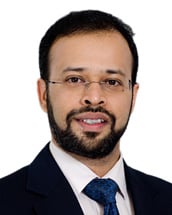The draft 7th edition of the Singapore International Arbitration Centre (SIAC) Rules was recently released for public consultation from 22 August 2023 to 21 November 2023.[1] According to the SIAC, the draft draws from the SIAC’s experience of administering more than 3,000 international cases under the SIAC Rules 2016, which involved parties from 106 jurisdictions across a range of seats and governing laws.
The key proposed changes to the SIAC Rules
- Implementation of a new case management system (i.e., SIAC Gateway) – Rule 4.2
The SIAC Gateway is likely to make it easier for all parties and the Tribunal to access the relevant case documents at any point in time and will likely allow parties to resolve the dispute in a more efficient manner.
- Provisions relating to Third-Party Funding – Rule 38
A party is obliged to disclose the existence of any third-party funding agreement and the identity of the third-party funder.
It will likely be easier for the counterparty to obtain information regarding the funding arrangement under the new draft rules which expressly provide the Tribunal with the power to order the disclosure of such information (including the funder’s interest in the outcome of the proceedings and whether the funder has committed to undertake adverse costs liability).
- Coordinated Proceedings – Rule 17
The draft of the 7th Edition of the SIAC Rules allows the same Tribunal (constituted in two or more arbitrations) to conduct the arbitrations in a coordinated manner (i.e., concurrently or sequentially) where a common question of law or fact arises out of or in connection with all the arbitrations.
This may be useful in cases where there are many different facets to the dispute (e.g., between the developer, the main contractor and various subcontractors). However, it remains to be seen whether, and to what extent, evidence adduced in one arbitration may be relied on in the other arbitrations, given that each arbitration will still be regarded as separate proceedings.
- Preliminary Determination – Rule 46
Parties may apply to the Tribunal for a preliminary determination of any issue where: (1) the parties agree that the Tribunal may determine such an issue on a preliminary basis; (2) the applicant is able to demonstrate that the determination is likely to contribute to a saving of time and costs and a more efficient and expeditious resolution of the dispute; or (3) the circumstances of the case warrant the preliminary determination.
The introduction of a new provision specifically for preliminary determinations underscores the Tribunal’s suite of case management powers, adding to the Tribunal’s existing powers under the SIAC Rules 2016 to direct the order of proceedings, bifurcate proceedings and direct parties to focus on issues the determination of which could dispose of all or part of the case.
- Expedited Procedure – Rule 14
The Expedited Procedure is a mechanism that is available under the SIAC Rules 2016. However, there have been certain changes, namely to: (1) increase the monetary limit to SGD 10,000,000 or its equivalent; and (2) allow the Tribunal to dispense with the Expedited Procedure after consulting the Registrar and the parties – under the SIAC Rules 2016, this would only be possible upon the application of a party.
- Streamlined Procedure – Rule 13 / Schedule 2
Parties may file an application for the arbitration to be conducted in accordance with the Streamlined Procedure where: (1) parties have agreed to the application of the Streamlined Procedure; (2) the amount in dispute does not exceed the equivalent of SGD 1,000,000; or (3) the circumstances of the case warrant the application of the Streamlined Procedure.
This would likely allow parties to have the dispute resolved within a shorter period of time of 3 months from the constitution of the Tribunal (e.g., where the arbitration is to be decided on the basis of written submissions and accompanying documentary evidence). The Streamlined Procedure also contemplates that only a sole arbitrator will be appointed. Where the arbitration is conducted in accordance with the Streamlined Procedure, the parties are deemed to have agreed that the Streamlined Procedure will apply over any inconsistent or contrary terms in the arbitration agreement.
- Additional Powers of the Tribunal – Rule 50.2(d)
The Tribunal has the power to “determine whether, and to what extent, the Tribunal should itself take the initiative in ascertaining the facts or the law.”
The Tribunal appears to have a broad and unconventional power under the draft of the 7th Edition of the SIAC Rules. It is currently unclear how and in what circumstances this power will be exercised by the Tribunal.
In summary, the SIAC’s proposed revisions to its rules reflect the SIAC’s commitment to positioning itself as a leading arbitral institution that is alive to the evolving needs of its users. Given the SIAC’s growing popularity as a preferred arbitral institution, the finalized revisions to the SIAC Rules will be keenly watched by practitioners and the arbitration community.
Comments
The proposed revisions to the SIAC Rules show that the SIAC is keenly aware of its users’ demands for greater efficiency and flexibility in how arbitral proceedings are conducted and managed. Key proposals such as the Streamlined Procedure for smaller claims acknowledge the differentiated needs of parties and represent an ambitious push by the SIAC towards tightening up inefficiencies where possible. The draft of the 7th edition of the SIAC Rules will likely undergo further changes in consultation with stakeholders, and users should pay close attention to this space.








